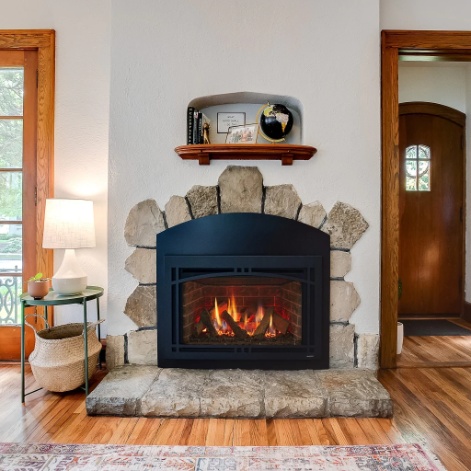Table of Contents
- 1 Key Takeaways:
- 2 What Are Garage Door Springs?
- 3 How Do Garage Door Springs Work?
- 4 What Are the Different Types of Garage Door Springs?
- 5 What Are the Signs That Your Garage Door Springs Need Adjustment?
- 6 What Are the Dangers of Not Adjusting Garage Door Springs?
- 7 How to Adjust Garage Door Springs?
- 8 When Should You Hire a Professional for Garage Door Spring Adjustment?
- 9 Frequently Asked Questions
Garage door springs are crucial components that ensure the smooth and efficient operation of your garage door. Understanding what garage door springs are, how they work, and the signs that indicate when they need adjustment is essential for maintaining the safety and functionality of your garage door.
In this comprehensive guide, we will explore the different types of garage door springs, and delve into the telltale signs that your springs may require adjustment. We will highlight the potential dangers of neglecting garage door spring maintenance. This article will also provide a step-by-step guide on how to adjust them. We will discuss when it’s best to enlist the expertise of a professional for garage door spring adjustment.
Keep reading to discover everything you need to know about precision and performance when it comes to garage door spring adjustment.
Key Takeaways:
- Regularly maintaining and adjusting garage door springs can improve their precision and performance.
- Signs that garage door springs need adjustment include difficulty opening or closing, loud noises, and uneven movement of the door.
- While adjusting springs can be done DIY, it is important to hire a professional for safety reasons if you are unsure or uncomfortable with the process.
What Are Garage Door Springs?
Garage door springs are essential components of the garage door system. They are responsible for counterbalancing the door’s weight and facilitating its smooth operation.
These springs work in coordination with the garage door opener to enable the seamless opening and closing of the door. They are typically located above the door. There are two main types of garage door springs: torsion and extension springs. Both serve the crucial purpose of supporting the weight of the door. The garage door springs undergo immense tension during operation. This is why it’s vital to ensure they are maintained and periodically inspected by a professional to prevent potential safety hazards.
How Do Garage Door Springs Work?
Garage door springs operate by storing and releasing tension to effectively counterbalance the weight of the garage door, enabling controlled and balanced movement.
When the garage door is closed, the springs are under immense tension, as they support the entire weight of the door. This stored energy is what allows the door to be lifted with ease when opened. As the door is raised, the tension in the springs slowly decreases until it reaches a point where the force is balanced, keeping the door in position.
When the door is closed again, the springs’ tension is once more engaged, offsetting the weight as it gently lowers the door. Properly adjusted springs are crucial for the smooth and safe operation of a garage door, as they prevent the door from crashing down or being too heavy to lift.
What Are the Different Types of Garage Door Springs?
There are two primary types of garage door springs: torsion springs and extension springs, each offering distinct mechanisms for supporting and balancing the garage door.
Torsion springs are typically mounted horizontally above the garage door and utilize rotational energy to counterbalance the door’s weight. When the door opens, the torsion springs unwind, storing energy. Conversely, when the door closes, the stored energy is released, helping with the smooth operation.
On the other hand, extension springs are usually positioned vertically on the sides of the door tracks. They extend and contract to support the door’s weight. When the door is raised, extension springs stretch, while they retract when the door is lowered, providing the necessary tension.
Both torsion springs and extension springs play a crucial role in ensuring the safe and efficient movement of garage doors, thereby enhancing the overall functionality and longevity of the system.
Torsion Springs
Torsion springs are a type of garage door spring that utilize rotational force to counterbalance the door’s weight and ensure smooth and controlled movement.
They work by twisting tightly when force is applied, storing rotational energy that can be released to lift or lower the garage door. This mechanism allows for more efficient weight distribution, reducing the strain on the opener system and extending the lifespan of the garage door components.
One advantage of torsion springs is their durability, as they are designed to withstand frequent use and varying weather conditions without losing their effectiveness. Their ability to provide controlled and balanced movement enhances safety and minimizes the risk of sudden failure or accidents.
Extension Springs
Extension springs are garage door springs that elongate and contract to support the door’s weight, offering a reliable and effective method of counterbalancing.
Due to their elongation-based operation, extension springs provide the necessary flexibility for smooth and balanced movement of garage doors. When the door is opened, these springs stretch and store energy, which is then released as the door closes, helping with lifting the door’s weight.
Their ability to elongate and contract based on the door’s movement ensures that the garage door remains in proper balance, preventing unnecessary strain on the opener system and increasing the longevity of the door. This functionality is crucial for preventing overstrain on the motor and other door components, leading to reduced maintenance costs and prolonging the lifespan of the entire garage door system.
What Are the Signs That Your Garage Door Springs Need Adjustment?
Several indicators suggest that your garage door springs may require adjustment, including difficulty in opening or closing the door, unusual noises during operation, and uneven movement of the door.
If you notice that the door seems heavier to lift than usual or doesn’t stay open when it should, these could be signs of spring issues. Any grinding, squeaking, or popping sounds emanating from the door during operation could indicate a problem with the springs. Another common indication is the door moving unevenly or jerking while opening or closing, which signifies potential spring trouble. It’s important to address these symptoms promptly to prevent further damage to the door or related components.
Difficulty Opening or Closing the Door
One of the clear signs of garage door spring adjustment needs is experiencing difficulty in opening or closing the door, indicating potential imbalance or tension issues within the spring mechanism.
This difficulty in door operation can manifest as the door being unusually heavy to lift or feeling unbalanced during opening and closing. Spring misalignment or tension imbalances can lead to the door becoming erratic and unreliable. These issues may stem from wear and tear over time, improper installation, or changes in temperature and humidity affecting the spring’s performance. It’s crucial to address these garage door spring adjustment issues promptly to avoid further damage to the door and ensure continued safe and smooth operation.
Loud Noises or Squeaking
Loud noises or persistent squeaking during garage door operation can signal the need for spring adjustment or maintenance, indicating potential friction or wear issues within the spring components.
These noises often point to the wear and tear of springs, typically due to prolonged usage or inadequate lubrication. The friction generated can lead to decreased operational efficiency and even pose safety risks. Addressing these issues promptly not only ensures smooth garage door functioning but also prolongs the lifespan of the entire system.
Uneven Movement of the Door
Uneven movement or irregular balance in the garage door’s operation may indicate underlying spring adjustment needs, highlighting potential imbalances or tension disparities within the spring system.
When the door exhibits lopsided behavior, significant strain can be exerted on certain parts of the spring mechanism, leading to accelerated wear and tear. This can not only compromise the door’s smooth operation but also pose safety risks.
The balance and tension adjustments play a crucial role in maintaining the proper functioning of the door and ensuring longevity of the entire system. It’s essential to address any signs of imbalance promptly to prevent further damage and avoid costly repairs in the long run.
What Are the Dangers of Not Adjusting Garage Door Springs?
Not fixing garage door spring issues can be very risky. It might lead to springs breaking suddenly, door problems, or dangers for people using the door.
If garage door springs aren’t adjusted right, they could break without warning. This can make the door fall and hurt someone or damage something. Springs that don’t work well can cause the door to be off-balance, putting extra stress on the opener and raising the chance of accidents. Also, if you ignore spring adjustments, the door might close on its own, which could seriously injure someone. Regular checks, upkeep, and getting a professional to adjust the springs are important to avoid these risks.
How to Adjust Garage Door Springs?
Adjusting garage door springs includes key steps like finding out the type of spring, getting the right tools, releasing tension, making adjustments or replacements, and testing how the door works.
First, figure out if you have torsion springs, which are usually above the closed door, or extension springs, found above the door tracks on both sides. After identifying the spring type, gather the needed tools like winding bars, vice grips, and a ladder.
Safely releasing the tension from the springs is very important. Then, you can make any needed adjustments or replacements. Finally, test the door to make sure it operates smoothly.
Determine the Type of Spring
The first step in adjusting garage door springs is to figure out which type you have – torsion springs or extension springs. This helps you choose the right way to adjust them and the tools you’ll need.
Knowing the spring type is important because it decides how to adjust the door for it to work best.
Torsion springs, which you find above the closed garage door, need careful adjusting to balance the door’s weight. You wind these springs up with tension using winding bars.
Extension springs, on the other hand, are above the upper tracks on both sides of the door. They stretch and contract when the door moves, so they need a different way to adjust them.
Gather Necessary Tools
Before adjusting the springs, make sure to have the right tools like winding bars, pliers, and safety gear for a safe and effective process.
Winding bars are key for safely winding and unwinding the springs, giving you leverage and control. Pliers are useful for working with safety cables and securing the torsion springs. Always put safety first. Wear eye protection, gloves, and a hard hat, and use blocking clamps to avoid accidents while adjusting the springs.
Release Tension on the Springs
To safely release tension from garage door springs, use the emergency release cord to disconnect the opener and reduce spring tension for adjustments.
Before working on the springs, be aware of the dangers of releasing their tension. Make sure to unplug the opener from the power source to avoid accidental activation. Put C-clamps on the tracks to keep the door stable and reduce the risk of it moving unexpectedly. Wear safety gear like glasses and gloves for protection when handling the springs.
Follow the manufacturer’s instructions to safely use the emergency release cord and disengage the opener. Only pull the cord when the door is completely closed to prevent sudden movements. Be careful when adjusting the springs after the tension is released, ensuring they are properly maintained to avoid damage or malfunction.
Adjust the Tension or Replace the Springs
The next step is to adjust the spring tension or consider replacing them. This requires precise adjustments or changing old or broken springs to fix the door’s balance and performance.
When adjusting tension, accurate measurements and calculations are key for the door to work well and safely. Springs can lose their stretch over time, leading to imbalance and safety risks. It’s important to look for wear signs, like visible gaps or uneven movements when the door works. If adjustments don’t fix these problems, replacing the springs might be needed. It’s best to get a professional to check the springs and make the right adjustments or replacements.
Test the Door
After adjusting or replacing parts, it’s crucial to test the garage door to make sure it’s balanced, works smoothly, and the spring mechanism functions correctly.
Once you adjust the garage door or change the springs, check that these changes improve how the door works. Testing how the door opens and closes helps fine-tune it, ensuring smooth, balanced movement without jerks. This step is very important for the spring mechanism. Any problems with it can cause safety risks and wear out other parts of the door system faster.
When Should You Hire a Professional for Garage Door Spring Adjustment?
It’s best to get professional help for garage door spring adjustment when dealing with complex spring issues. Professionals should be contacted when you have safety worries. Also, if your warranty covers maintenance and replacements, contact an expert.
Problems like serious misalignment, torsion spring adjustments, or issues with extension springs need expert knowledge. Experts have the tools for safe and correct repair. Professional technicians know how to do these complex jobs well. This lowers the risk of injury and helps your garage door last longer. If your garage door is under warranty, using professional services is required to keep your warranty valid.
Contact the experts at Dreifuss Fireplaces (& Doors) today!
Frequently Asked Questions
1. What is the purpose of adjusting garage door springs for precision and performance?
Garage door springs are responsible for supporting the weight of the door and ensuring smooth opening and closing. Adjusting them for precision and performance helps to maintain proper balance. It also reduces strain on other components, improving the overall functionality of the door.
2. How often should garage door springs be adjusted for precision and performance?
It is recommended to have your garage door springs adjusted for precision and performance at least once a year. If you notice any issues with the door’s operation it may be necessary to adjust the springs sooner.
3. Can I adjust my garage door springs for precision and performance on my own?
We highly recommend leaving garage door spring adjustments to trained professionals. These springs are under high tension. They can be dangerous to work with if you do not have the proper knowledge and experience.
4. How can precision and performance adjustments to garage door springs save me money in the long run?
By keeping your garage door springs properly adjusted, you can prevent premature wear and tear on other components. This can save you from costly repairs or replacements down the line.
5. Are there any signs that indicate my garage door springs need to be adjusted for precision and performance?
Yes, there are a few common signs that may indicate it’s time to adjust your garage door springs. A door that is slow to open or close or uneven gaps between the door and the ground are signs. Excessive noise during operation is also a sign.
6. What should I do if I notice an issue with my garage door’s precision and performance after having the springs adjusted?
If you notice problems with your garage door after having the springs adjusted, it is best to contact a professional. They will further inspection and adjust the garage door. Attempting to fix the issue yourself can be dangerous and may lead to further damage to your door.
Latest Articles

What Is An NG (Natural Gas) Indicator And Why You Need It For Your Fireplace
Table of Contents1 Understanding Natural Gas Fireplaces2 What is an NG Indicator?3 Importance of NG Indicators for Safety4 Types of NG Indicators5 Installation and Maintenance of NG Indicators6 Signs of a Faulty NG Indicator7 Frequently Asked Questions Natural gas fireplaces are a favored option among numerous homeowners due to their convenience and effectiveness. But, what is an NG (Natural Gas) indicator and why you need it for your fireplace? It is imperative to comprehend how they function and the significance of having an NG (Natural Gas) indicator for safety purposes. This article delves into the definition and significance of NG indicators. We will discuss the potential hazards associated with the absence of one and the various types of indicators accessible. Also, we will discuss installation and maintenance recommendations, and methods to recognize and rectify issues with malfunctioning indicators. Stay well-informed and ensure the safety of your home by referring to this exhaustive guide. Understanding Natural Gas Fireplaces Natural gas fireplaces serve as an efficient and convenient heating option for numerous households. They utilize natural gas as a fuel source to deliver consistent warmth and ambiance. How They Work and Why They Need NG Indicators The operation of natural gas fireplaces involves igniting natural gas to generate heat. This process requires diligent monitoring to ensure both safety and efficiency, a task facilitated by the use of NG indicators. NG indicators play a critical role in detecting potential gas leaks. They enable residents to promptly address and mitigate any associated hazards. Through continuous monitoring of gas levels and providing timely warnings and alerts, NG indicators uphold a secure indoor environment. It is imperative to ensure that these indicators function properly to facilitate the effective operation of natural gas fireplaces. This helps mitigate the inherent risks linked to gas leaks. What is an NG Indicator? An NG indicator is a specialized device equipped with advanced sensors and technology. It is specifically designed to detect natural gas leaks and monitor gas pressure in appliances, such as fireplaces. Definition and Purpose The NG indicator functions as a detector that monitors gas appliances for potential leaks. It provides essential functionality to ensure safety in households utilizing natural gas. These detectors play a crucial role in protecting residences by notifying occupants of dangerous gas leaks long before they escalate into perilous situations. Through continuous monitoring of gas levels in the vicinity, NG indicators offer an additional layer of protection. This is particularly important in properties that rely on gas-operated fireplaces or stoves. These devices not only help avert potential disasters but also enhance the overall peace of mind of homeowners. They assure them that their living spaces are equipped with reliable safety features. Importance of NG Indicators for Safety Natural gas indicators are essential for maintaining safety in households equipped with natural gas appliances. These devices serve as a proactive measure to promptly detect gas leaks. This offers homeowners a sense of security and assurance. Potential Dangers of Not Having an NG Indicator The absence of an NG indicator in residences equipped with natural gas appliances can pose significant hazards. This includes the risk of undetected gas leaks , carbon monoxide poisoning , and pilot outages that may lead to dangerous situations. These potential risks can profoundly impact indoor air quality. They directly influence the health and safety of individuals residing in the household. Undetected gas leaks can go unnoticed, gradually permeating the air and creating a potentially explosive environment. Insufficient ventilation from undetected exposure to carbon monoxide can lead to serious health complications. These range from mild symptoms such as dizziness to fatal poisoning. Without proper monitoring from an NG indicator, families are left susceptible to these concealed threats. This underscores the critical importance of implementing proactive measures to mitigate such risks. Types of NG Indicators Indicators for Natural Gas (NG) are available in diverse types. Each presents distinct detection capabilities tailored to specific requirements, encompassing both manual and automated alternatives. Manual vs. Automatic Indicators Manual NG indicators require user intervention for monitoring gas levels and identifying leaks. On the other hand, automatic indicators employ sophisticated technology to deliver continuous, real-time monitoring. This heightened efficiency and oversight enhance safety protocols. Conventional manual indicators rely on individuals to physically inspect and evaluate gas levels periodically. This renders them more susceptible to human errors. Conversely, automatic indicators feature sensors capable of promptly detecting even the most minute fluctuations in gas levels. This establishes a more dependable and precise monitoring mechanism. Automatic indicators can activate alerts and shut-off systems upon detecting a leak. This ensures immediate action to avert potential hazards. This advanced technology enhances safety protocols and instills a sense of command and assurance among users. Installation and Maintenance of NG Indicators The reliable and accurate performance of NG indicators necessitates proper installation and consistent maintenance. This often entails professional installation and adherence to recommended service guidelines. Proper Installation and Regular Maintenance Tips The proper installation of NG indicators involves adhering to the specifications in the user manual. Maintenance protocols entail strict adherence to a predetermined maintenance schedule to ensure sustained operational efficiency. During the installation phase, it is imperative to verify that the NG indicators are securely affixed in the designated location as stipulated by the manufacturer. Crucial steps include confirming power source compatibility and ensuring proper grounding of the device to optimize performance. Calibration of the indicator must be executed meticulously to ensure precise readings. Regarding maintenance, essential practices include regular inspection for signs of wear, thorough cleaning of the indicator components, and routine functionality tests. By allocating time to a consistent maintenance regimen, the NG indicator can operate with optimal efficiency over an extended duration. Signs of a Faulty NG Indicator Recognizing indicators of a malfunctioning NG indicator is essential for upholding safety and performance standards. Inaccuracies and detection issues can undermine the efficacy of these devices. Identifying and Addressing Issues The process of identifying and addressing issues related to NG (natural gas) indicators requires a systematic troubleshooting approach. This ensures their optimal performance

What You Need To Know About Gas Log Set Safety And Installation Considerations
Table of Contents1 Understanding Gas Log Sets2 Safety Considerations for Gas Log Sets3 Installation Guidelines for Gas Log Sets4 Maintaining and Troubleshooting Gas Log Sets5 Frequently Asked Questions Gas log sets are a favored option among homeowners seeking to enjoy the comfort and atmosphere of a conventional fireplace without the inconvenience of wood. This article tells you what you need to know about gas log set safety and installation considerations. Before incorporating one into your residence, it is imperative to understand the safety considerations associated with their use. This discussion delves into the potential hazards linked with gas log sets. It presents crucial precautions to uphold the safety of your home. Also, it outlines proper installation procedures and offers insight into common errors to avoid. Finally, it provides advice on maintenance and troubleshooting. Gain comprehensive knowledge on gas log set safety and installation considerations. Understanding Gas Log Sets Comprehending gas log sets is essential for individuals seeking to elevate their fireplace experience, and for gas lag set safety and installation. These heating appliances can operate on either natural gas or propane. In addition, they are available in a range of styles, including vented, ventless, and vent-free options. They provide an array of benefits and customization opportunities through various fireplace accessories. What are Gas Log Sets? Gas log sets are meticulously crafted artificial logs. They are designed to imitate the appearance and functionality of authentic wood logs within fireplaces. These gas log sets typically consist of ceramic or refractory concrete logs that have been skillfully molded and painted. This allows them to replicate the natural grain and texture of real wood. The logs are arranged in various configurations within the fireplace. They establish a realistic and welcoming ambiance. In addition to the logs, gas log sets often include fireplace accessories such as glowing embers. Accessories also include decorative stones, and even pine cones to enhance the overall aesthetic appeal. Homeowners can select from an array of placement options. These include traditional wood stack, cascading driftwood, or a contemporary geometric arrangement. Homeowners can align their preferred style and design preferences. Safety Considerations for Gas Log Sets Safety considerations for gas log sets are of utmost importance to guarantee a secure and pleasant fireplace experience. It is essential to address potential hazards such as carbon monoxide exposure, gas leaks, and fire safety to maintain a safe environment for homeowners. Potential Hazards and Precautions Gas log sets come with potential hazards that must be taken seriously, including the risks of gas leaks, carbon monoxide poisoning, and fire incidents. It is imperative to establish and adhere to rigorous safety measures to ensure the well-being of individuals and properties involved in the use of gas log sets. Gas leaks represent a significant hazard when utilizing gas log sets. They can result in the accumulation of combustible gas within the premises, heightening the possibility of explosions or fires. Carbon monoxide, an insidious gas generated during incomplete combustion, poses a grave threat due to its colorless and odorless nature, making it undetectable without proper monitoring. To address these risks effectively, it is vital to install carbon monoxide detectors and gas leak sensors in the vicinity of the gas logs. Routine maintenance checks on the gas log system, including cleaning and inspection procedures, are critical to ensure safe operations and the prompt identification of potential issues. In case of a gas leak or suspected presence of carbon monoxide, immediate evacuation of the affected area is paramount, followed by prompt contact with emergency services. Recognizing the distinct odor of rotten eggs associated with natural gas can serve as an early warning sign, prompting swift actions to avert any potential accidents. Installation Guidelines for Gas Log Sets The installation of a gas log set necessitates meticulous planning and strict adherence to specific guidelines. This includes verifying a secure gas connection, ensuring proper gas lines are in place, and complying with local building codes. Often, the complexity of these requirements may require the expertise of a certified technician. Proper Installation Techniques The appropriate installation procedures for gas log sets involve the secure connection of gas lines, meticulous adherence to installation manuals, and strict compliance with local building codes. It is imperative to prioritize the guarantee of secure gas connections to avert leaks and potential safety hazards. During the installation of gas log sets, utilizing suitable sealants and fittings is essential to establish a tightly sealed connection. The correct installation of gas lines is critical for both the safety and operational efficacy of the gas log set. Reference to the installation manual is highly advisable for detailed, step-by-step guidance to prevent inaccuracies and ensure the successful establishment of the gas log set. Consistently adhering to building codes and regulations upholds safety standards. Seeking guidance and confirmation from a certified technician before and after installation can offer invaluable support and assurance throughout the process. Common Installation Mistakes to Avoid It is imperative to avoid common installation errors to ensure the secure and effective operation of gas log sets. This includes verifying proper gas connections and compliance with building codes. Improper gas connections can result in leaks and potential hazards, underscoring the importance of verifying the tightness and correct alignment of all fittings. Failure to adhere to building codes can lead to structural complications, penalties for non-compliance, or even safety concerns. To prevent these oversights, it is advised to consult the manufacturer’s installation guidelines and strictly adhere to local regulations. Engaging a certified technician for the installation of gas log sets guarantees that the procedure is carried out accurately and securely. This provides assurance that the system is functioning as intended. Maintaining and Troubleshooting Gas Log Sets Regular maintenance and troubleshooting of gas log sets are imperative to uphold their optimal performance and safety. This includes thorough examination of the pilot light, pilot assembly, and other gas appliances to preserve heating efficiency and promptly resolve any arising issues. Tips for Maintenance and Repair Ensuring the proper maintenance of your gas log set necessitates conducting

Key Considerations For Using Compressed Liquid Propane In Fireplace Installation
Table of Contents1 What is Compressed Liquid Propane?2 Benefits of Using Compressed Liquid Propane in Fireplaces3 Safety Precautions for Installing Compressed Liquid Propane Fireplaces4 Installation Process for Compressed Liquid Propane Fireplaces5 Maintenance and Care for Compressed Liquid Propane Fireplaces6 Alternative Fuel Options for Fireplaces7 Frequently Asked Questions If you are contemplating the use of compressed liquid propane in your fireplace installation, this discussion will delve into the advantages of adopting this alternative fuel option. These benefits include enhanced efficiency, cost savings, and important safety precautions to consider. Furthermore, a detailed step-by-step guide on the installation process will be provided, along with recommendations for maintenance and care. A comparison of various fuel options for fireplaces will also be conducted to assist you in making an informed decision. We encourage you to stay engaged to gain insights into optimizing your fireplace’s capabilities with compressed liquid propane. What is Compressed Liquid Propane? Compressed Liquid Propane is a versatile energy source contained in a high-pressure propane tank. It finds extensive utility in both residential and commercial settings, prominently including fireplaces. Recognized for its convenience and efficiency, Compressed Liquid Propane emerges as a favored option for heating residential spaces and facilitating culinary pursuits across various environments. Additionally, it serves as a viable fuel substitute in vehicular contexts, portable cooktops, and outdoor grilling scenarios due to its propensity for clean combustion. The attribute of portability, coupled with ease of storage, positions Compressed Liquid Propane as an optimal energy source for individuals residing off the conventional grid. It is also great for engaging in outdoor activities such as camping and recreational vehicle (RV) travel. Moreover, the high energy density inherent to Compressed Liquid Propane renders it a dependable choice for sustaining generators during instances of power disruptions. Benefits of Using Compressed Liquid Propane in Fireplaces Utilizing Compressed Liquid Propane for fireplace installation presents several benefits. These include enhanced fuel efficiency, convenience, cost-effectiveness, and a favorable environmental footprint. These attributes render it a recommended option for heating solutions, applicable to both on-grid and off-grid settings. Efficiency and Cost Savings The utilization of Compressed Liquid Propane in fireplaces offers significant advantages, notably in terms of high fuel efficiency and cost-effectiveness. These attributes are underscored by the exceptional BTU rating and overall heating efficiency of Compressed Liquid Propane. The elevated fuel efficiency exhibited by Compressed Liquid Propane fireplaces necessitates less fuel to generate the same level of heat compared to traditional wood-burning fireplaces or electric heating systems. Consequently, homeowners can realize cost savings on their heating expenditures over an extended period. Moreover, the clean-burning characteristics of propane minimize maintenance costs linked to soot and ash cleanup. This further enhances the cost-effectiveness of employing propane fireplaces. Safety Precautions for Installing Compressed Liquid Propane Fireplaces Ensuring safety is of utmost importance during the installation of Compressed Liquid Propane fireplaces. This requires strict adherence to safety regulations, meticulous attention to proper ventilation requirements, careful control of ignition sources, and the incorporation of carbon monoxide and gas leak detection systems. Important Safety Measures Essential safety protocols for the installation of Compressed Liquid Propane fireplaces encompass adherence to fire safety regulations. Engaging in professional assessments and employing sophisticated gas leak and carbon monoxide detection mechanisms is crucial. Professional evaluations play a critical role in identifying any prospective hazards or irregularities within the fireplace infrastructure. These assessments are vital in ensuring the operational integrity of all components and compliance with safety protocols. Routine inspections serve to forestall potential fire incidents, gas discharges, or carbon monoxide emissions that could pose significant threats to both the property and individuals in the vicinity. The utilization of advanced gas leak and carbon monoxide detection systems serves as an additional safeguard by promptly notifying occupants of any elevated levels of these hazardous gases. Installation Process for Compressed Liquid Propane Fireplaces The installation procedure for Compressed Liquid Propane fireplaces encompasses several critical steps. These include: Adhering to installation guidelines Correctly positioning the propane tank Ensuring precise gas line installation Optimizing heat output Monitoring pressure regulation Establishing the pilot light Step-by-Step Guide The installation process of Compressed Liquid Propane fireplaces involves a systematic approach. This begins with the construction of the firebox, followed by the installation of the gas control valve, setup of the ignition system, design of the flue, and verification of a suitable combustion air supply. The construction of the firebox assumes critical importance as it serves as the foundation of the fireplace structure. It securely holds the combustible materials in place. Subsequently, the gas control valve plays a key role in managing the propane flow, guaranteeing safe and efficient operation. The installation of the ignition system facilitates convenient and reliable fire initiation. Designing the flue is a necessary step to direct exhaust gases outside, thus preventing their accumulation indoors. Moreover, ensuring a proper combustion air supply is essential to sustain optimal burning conditions and enhance fuel consumption efficiency. Each component contributes significantly to the functionality and safety of the fireplace installation process. This underscores the importance of meticulous attention to detail and adherence to established protocols. Maintenance and Care for Compressed Liquid Propane Fireplaces Consistent maintenance and attention to Compressed Liquid Propane fireplaces are imperative to guarantee their optimal functionality. This includes adherence to prescribed maintenance protocols, regular chimney upkeep, prevention of soot accumulation, and scheduling of routine propane deliveries and professional inspections. Tips for Keeping Your Fireplace in Good Condition For the maintenance of your Compressed Liquid Propane fireplace, it is essential to conduct regular checks on ignition sources. Monitor flame appearance, clean the gas burner and pilot assembly, and verify the correct operation of the safety shut-off valve. The inspection of ignition sources requires a detailed examination of the electronic igniter. This helps identify any signs of damage or corrosion and ensures proper sparking upon activation. Monitoring flame appearance involves observing a consistent blue flame with minimal flickering, which signifies efficient combustion. Cleaning the gas burner and pilot assembly can be performed using a soft brush or compressed air to eliminate any dirt or debris that may


















































































